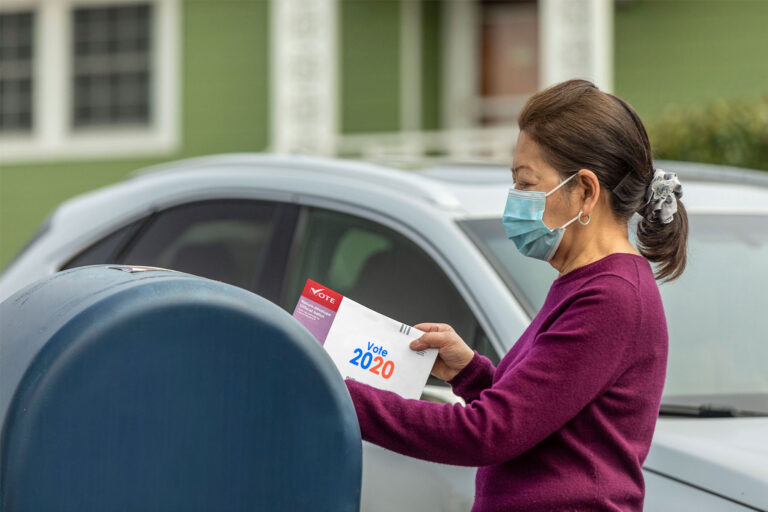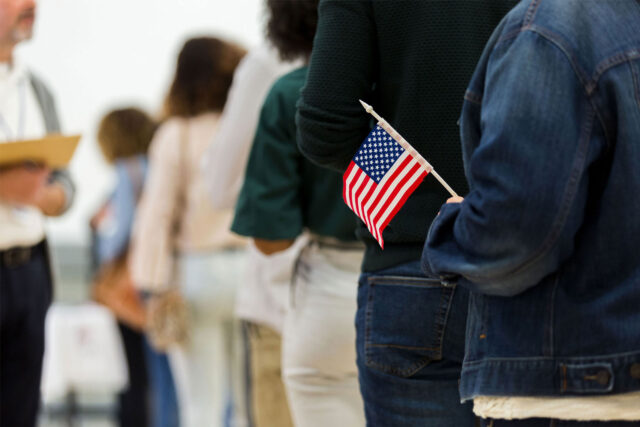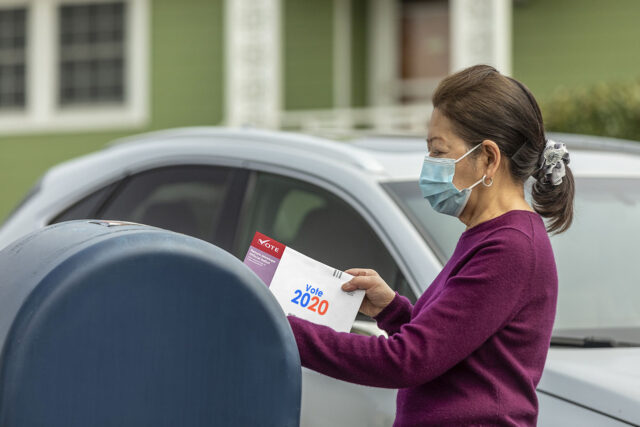With COVID-19 a threat, election officials worried that voters might not turn out to cast their ballots last November. Poll workers also faced greater risk of exposure and might have been unwilling to staff sites. “We saw in the 2020 election a sudden set of risks involved in just the simple act of voting,” said PPIC senior fellow Eric McGhee before introducing findings from a PPIC report that examines the effect of policy changes on voter turnout in California and the nation. “Suddenly showing up in person at a polling place risked viral transmission.”
Most states chose to minimize the threat from coronavirus by encouraging more voting by mail. California mailed every voter a ballot, several counties offered new options for in-person voting, and the state is considering legislation to make some of the changes permanent.
Election policy changes across the country allowed tremendous experimentation: 9 states removed restrictions to signing up for vote-by-mail while 15 mailed every voter a vote-by-mail application. “That was a real policy innovation that had almost never been tried before 2020,” McGhee said. Seven states and Washington DC sent ballots to all voters.
Turnout across the nation increased by 7 percentage points. California saw an even bigger bump along with a sharp rise in mail ballots, from nearly 58% to nearly 87%.
States that sent every voter a ballot saw a boost in turnout relative to those that made no change to their vote-by-mail access policy. The increase in turnout was far smaller or even negative for states that relaxed their excuse policy or sent applications. The analysis also accounted for other influences, including policy changes like automatic voter registration, COVID case load, or the competiveness of a state.
For in-person voting in California, 16 counties retained traditional polling places, but others adopted new policies. Seven consolidated into precincts for voters in specific neighborhoods and 17 consolidated into polling places accessible to any voter in the county. Meanwhile, 15 counties had implemented the Voters Choice Act (VCA) before the pandemic and maintained that policy—an approach similar to polling places accessible to the county. Three rural counties had been all vote-by-mail without precincts before the pandemic.
Turnout increased for almost all California counties, because every county became an all-mail ballot county in 2020. Beyond that finding, no clear pattern emerged for changes to in-person voting options.
Even with the rise in mail ballots, slightly fewer ballots were rejected around the country; the rejection rate also fell a bit in California. McGhee suggested that any change was likely due to a statewide policy, such as California moving the deadline for receiving a ballot to 17 days after Election Day and adopting a ballot tracking system.
“If your goal is to increase turnout, then mailing a ballot probably accomplishes most of the turnout benefits,” McGhee said. A caveat is that the study doesn’t examine equity effects—whether policy changes affected the representativeness of the electorate—data McGhee and his team hope to have soon.



